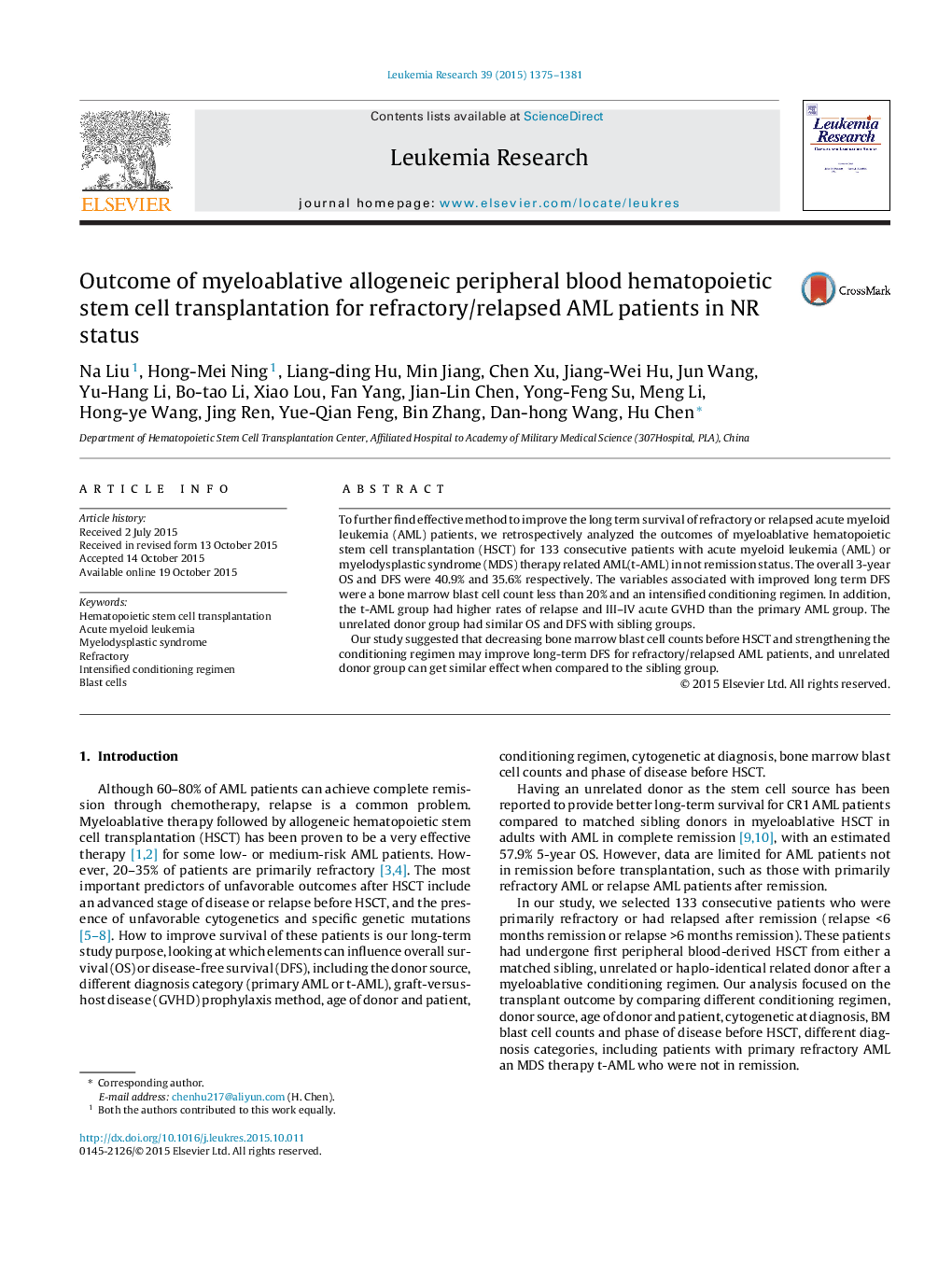| Article ID | Journal | Published Year | Pages | File Type |
|---|---|---|---|---|
| 2136524 | Leukemia Research | 2015 | 7 Pages |
•Decreasing bone marrow blast cell counts before HSCT can improve long-term DFS of refractory/relapsed AML patients.•Strengthening the conditioning regimen can improve long-term DFS of refractory/relapsed AML patients.•The unrelated donor group had similar OS and DFS with the matched sibling.•MDS therapy related AML group had higher rates of relapse and III–IV acute GVHD than the primary AML group.
To further find effective method to improve the long term survival of refractory or relapsed acute myeloid leukemia (AML) patients, we retrospectively analyzed the outcomes of myeloablative hematopoietic stem cell transplantation (HSCT) for 133 consecutive patients with acute myeloid leukemia (AML) or myelodysplastic syndrome (MDS) therapy related AML(t-AML) in not remission status. The overall 3-year OS and DFS were 40.9% and 35.6% respectively. The variables associated with improved long term DFS were a bone marrow blast cell count less than 20% and an intensified conditioning regimen. In addition, the t-AML group had higher rates of relapse and III–IV acute GVHD than the primary AML group. The unrelated donor group had similar OS and DFS with sibling groups.Our study suggested that decreasing bone marrow blast cell counts before HSCT and strengthening the conditioning regimen may improve long-term DFS for refractory/relapsed AML patients, and unrelated donor group can get similar effect when compared to the sibling group.
